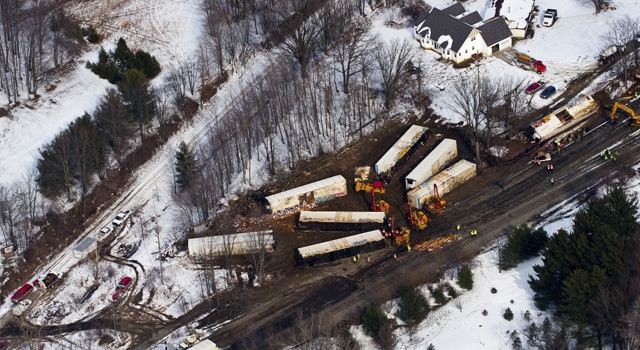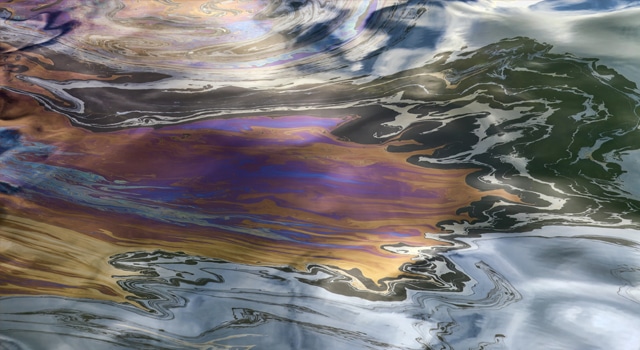In a groundbreaking development for environmental justice, individuals now have the opportunity to pursue compensation for injuries stemming from the polluted water at U.S. Marine Corps Base Camp Lejeune.
For the estimated 1 million individuals impacted by this water contamination, it’s crucial to understand what the Camp Lejeune lawsuit is, its significance, and any potential outcomes of legal proceedings. Here, we shed light on the outlook and implications of this legal action, including what you need to initiate a Camp Lejeune claim.
The Camp Lejeune Lawsuit: An Overview
From 1953 to 1987, the water supply at Camp Lejeune in North Carolina was contaminated with hazardous chemicals, leading to profound health concerns for thousands of individuals, such as cancer, birth defects, and other serious medical issues. Many of those impacted have grappled with difficult health conditions for years.
For veterans and their families stationed at the base and civilians who worked there, the consequences of water contamination at Camp Lejeune have been severe. This has led to legal action, with individuals pursuing justice for the health impacts they have endured.
Fortunately, justice prevails. Through the Camp Lejeune Justice Act of 2022, individuals who suffered injuries are now empowered to initiate legal action and seek compensation through a Camp Lejeune water contamination claim.
Discover If You Qualify for a Claim
If you or a loved one has been affected by the Camp Lejeune water contamination, there is hope. Our experienced environmental litigation team is here to guide you through the process and determine whether you qualify for a Camp Lejeune lawsuit claim.
Take the first step toward justice with a free case evaluation.
Understanding Water Contamination at Camp Lejeune
Camp Lejeune’s water contamination was the result of multiple actions and inactions over the course of several decades. The water supplies were contaminated by a mix of hazardous chemicals, including:
- Trichloroethylene (TCE).
- Tetrachloroethylene (PCE).
- Vinyl chloride.
- Benzene.
- Other carcinogens.
The repercussions of this contamination were profound, affecting not only the immediate environment but the health and well-being of those who relied on the water supply. Poor waste management and failure to adhere to environmental regulations largely contributed to the water contamination, which occurred over an extended period.
How Did the Water at Camp Lejeune Get Contaminated?
Camp Lejeune’s water supply primarily became contaminated through improper disposal practices of hazardous materials on the base. Various activities led to toxic substances infiltrating local water sources, such as:
- Leaks in underground storage tanks.
- Improper waste management.
- Disposal of industrial chemicals.
- Runoff from contaminated areas.
These circumstances allowed toxic substances to seep into the surrounding soil, enter the groundwater, and leach into water sources, effectively polluting the water supply.
In one example, PCE contamination stemmed from the actions of an off-base dry cleaning business, ABC One-Hour Cleaners. Over the years, spills and improper disposal methods have led to substantial groundwater contamination. Water supplies in housing units, including family housing, schools, and training facilities were directly affected.
Water found heavily contaminated with TCE was attributed to various sources, such as leaking underground storage tanks. The Navy’s investigation revealed the presence of other contaminants in the water supplies at levels far exceeding the standards for safe drinking water.
Did Camp Lejeune Know the Water Was Contaminated?
Evidence, including internal documents and investigations, suggests that officials were indeed aware of the water contamination at U.S. Marine Corps Base Camp Lejeune. The presence of hazardous chemicals in the water was made known to the Marine Corps as early as 1982.
Despite this knowledge, actions to address the contamination and protect residents and personnel were delayed, contributing to prolonged toxic exposure and the associated health issues. The acknowledgment of this awareness is a crucial point of accountability for the irreversible impact on thousands of lives.
How Did They Find Out About the Water at Camp Lejeune?
Water contamination at Camp Lejeune was discovered through a series of investigations and testing throughout the 1980s, revealing elevated levels of toxic substances in the water supply. These tests were prompted by changes to state regulations, as well as unusual health patterns among residents. As troubling health issues among the Camp Lejeune population became more apparent, a proactive approach was taken to understand the root cause of the concerns.
A more comprehensive understanding of the water contamination issue came to light through collaboration between environmental agencies, health professionals, and military institutions.
Though too late, the increased transparency over the issue spurred ongoing efforts to address the consequences, establish accountability, and help individuals facing life-changing health challenges to seek justice.
Why Did It Take So Long to Find Out About the Water at Camp Lejeune?
The prolonged discovery of Camp Lejeune’s water contamination is due to a combination of factors, including delayed investigations and inadequate awareness. A lack of routine and comprehensive testing for contaminants in earlier years and an unclear correlation between health issues and water contamination both played a significant part.
As well, the military and responsible authorities may not have displayed transparency, engaging in poor disclosure practices. This could have hindered proactive communication and timely preventive measures.
Who Qualifies for a Camp Lejeune Claim?
If you meet any of the following criteria, you may be eligible for a Camp Lejeune lawsuit:
- You resided or worked at Camp Lejeune as a veteran, civilian, employee, or servicemember’s loved one for at least 30 days between August 1953 and December 1987.
- You developed one of the eligible life-altering conditions as a result of water contamination.
Affected parties deserve compensation. If you’re uncertain whether you qualify, consult our water contamination attorneys to explore your eligibility.
Potential Exposure to Contaminated Water at Camp Lejeune
There were various avenues of exposure to contaminated water at Camp Lejeune. Individuals were primarily exposed to contaminated water by drinking it, though the water supply was also used for cooking, bathing, and various domestic and recreational activities. Therefore, exposure could have also occurred through:
- Skin contact with contaminated water sources.
- Secondary exposure through inhalation.
- In utero exposure.
Individuals who depended on this water supply for drinking and personal hygiene were directly and continuously exposed to the contaminants, particularly those residing in family housing units.
What Diseases Are Associated with Camp Lejeune Water Contamination?
Water contamination at Camp Lejeune has been associated with various diseases and health conditions, including:
- Cancers:
- Bladder.
- Breast.
- Cervical.
- Esophageal.
- Hodgkin lymphoma.
- Kidney.
- Leukemia.
- Lung.
- Liver.
- Multiple myeloma.
- Non-Hodgkin lymphoma.
- Ovarian.
- Rectal.
- Female infertility and miscarriage.
- Hepatic steatosis.
- Myelodysplastic syndromes.
- Renal toxicity and kidney failure.
- Scleroderma.
- Non-Cardiac birth defects.
To better understand the impact of the exposure, the association between Camp Lejeune water contamination and these health conditions has been established through investigations by the Agency for Toxic Substances and Disease Registry and other health organizations.
The Camp Lejeune Justice Act of 2022
Representing a milestone in the pursuit of justice, the Camp Lejeune Justice Act (CLJA) of 2022 is a pivotal legal development addressing the consequences of water contamination at Camp Lejeune. It provides a legal pathway for individuals affected by the contamination file claims and seek compensation for health conditions experienced due to toxic exposure.
For those impacted by the exposure, the CLJA is an important beacon of hope. The legislation enables a new legal process, marking a significant step toward holding those responsible accountable.
The Act recognizes the legitimacy of severe health conditions linked to water contamination and facilitates restitution. Ultimately, the legislation makes it more accessible for individuals to seek justice for the long-term health consequences they’ve suffered because of exposure to contaminated water at Camp Lejeune.
Take a Step Toward Legal Action
If you believe you qualify for a Camp Lejeune claim under the criteria outlined in the CLJA, it’s crucial to consult with an attorney for guidance. The legal team at Weitz & Luxenberg can provide you with the support and necessary information to pursue a Camp Lejeune lawsuit and navigate the complexities of the proceedings on the way to securing the compensation you deserve.
How Weitz & Luxenberg Can Help Your Camp Lejeune Claim
As a nationally acclaimed firm, Weitz & Luxenberg is adept at handling intricate personal injury and environmental claims. Need assistance? Call us today. Our consultations come at no cost.
 W&L Team
W&L Team 

